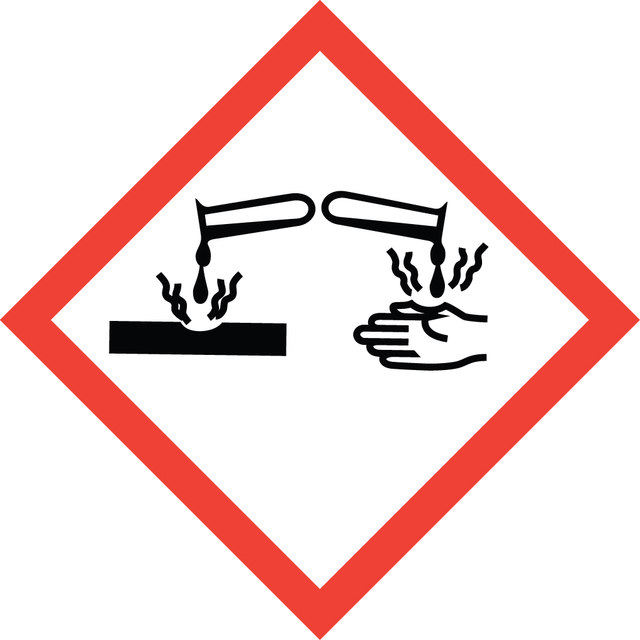Sign In to View Organizational & Contract Pricing
Select a Size
About This Item
Linear Formula:
CH3(CH2)7SiCl3
CAS Number:
Molecular Weight:
247.67
Beilstein:
1744230
EC Number:
MDL number:
UNSPSC Code:
12352103
PubChem Substance ID:
NACRES:
NA.23
vapor density
>1 (vs air)
Quality Level
Assay
97%
form
liquid
refractive index
n20/D 1.447 (lit.)
bp
233 °C/731 mmHg (lit.)
density
1.07 g/mL at 25 °C (lit.)
SMILES string
CCCCCCCC[Si](Cl)(Cl)Cl
InChI
1S/C8H17Cl3Si/c1-2-3-4-5-6-7-8-12(9,10)11/h2-8H2,1H3
InChI key
RCHUVCPBWWSUMC-UHFFFAOYSA-N
Looking for similar products? Visit Product Comparison Guide
General description
Trichloro(octyl)silane (OTS) is a linear alkylsilane which is used as a modifying agent which creates a low cost hydrophobic surface with high thermo-mechanical stability. OTS contains hydrolysable groups which form a covalent bond with the hydroxyl groups present on the surface.
Application
OTS functionalized magnesium oxide (MnO2)/aluminium oxide (Al2O3) surface can be used as a catalyst in the decomposition of ozone (O3) and nitrogen dioxide (NO2). OTS can also be used for the surface modification of silicon oxide (SiO2), used in the fabrication of pentacene organic field effect transistors (OFETs). OTS functionalized wafers can be coated on enhanced green fluorescent protein (GFP) and anchor peptides based films to determine the thickness of the films.
Signal Word
Danger
Hazard Statements
Precautionary Statements
Hazard Classifications
Eye Dam. 1 - Skin Corr. 1B
Supplementary Hazards
Storage Class Code
8A - Combustible corrosive hazardous materials
WGK
WGK 1
Flash Point(F)
185.0 °F - closed cup
Flash Point(C)
85 °C - closed cup
Personal Protective Equipment
dust mask type N95 (US), Eyeshields, Gloves
Regulatory Information
危险化学品
This item has
Choose from one of the most recent versions:
Already Own This Product?
Find documentation for the products that you have recently purchased in the Document Library.
Anodized aluminum oxide thin films for room-temperature-processed, flexible, low-voltage organic non-volatile memory elements with excellent charge retention.
Martin Kaltenbrunner et al.
Advanced materials (Deerfield Beach, Fla.), 23(42), 4892-4896 (2011-10-01)
Byoung H Lee et al.
Journal of nanoscience and nanotechnology, 8(9), 4818-4821 (2008-12-04)
The gas-phase adsorption of octyltrichlorosilane onto MgO produces self-assembled monolayers that can provide protection against hydration of the underlying MgO surfaces. MgO thin film has attracted attention for application as a protecting layer of alternating current plasma display panel. On
Kechun Zhang et al.
Journal of the American Chemical Society, 127(29), 10136-10137 (2005-07-21)
An artificial polypeptide scaffold composed of surface anchor and protein capture domains was designed and expressed in vivo. By using a mutant E. coli phenylalanyl-tRNA synthetase, the photoreactive amino acid para-azidophenylalanine was incorporated into the surface anchor domain. Octyltrichlorosilane-treated surfaces
Anchor peptides: A green and versatile method for polypropylene functionalization.
Rubsam K, et al.
Polymer, 116(1), 124-132 (2017)
Performance comparison of pentacene organic field-effect transistors with SiO2 modified with octyltrichlorosilane or octadecyltrichlorosilane.
Tiwari SP.
Organic Electronics, 13(1), 18-22 (2012)
Our team of scientists has experience in all areas of research including Life Science, Material Science, Chemical Synthesis, Chromatography, Analytical and many others.
Contact Technical Service